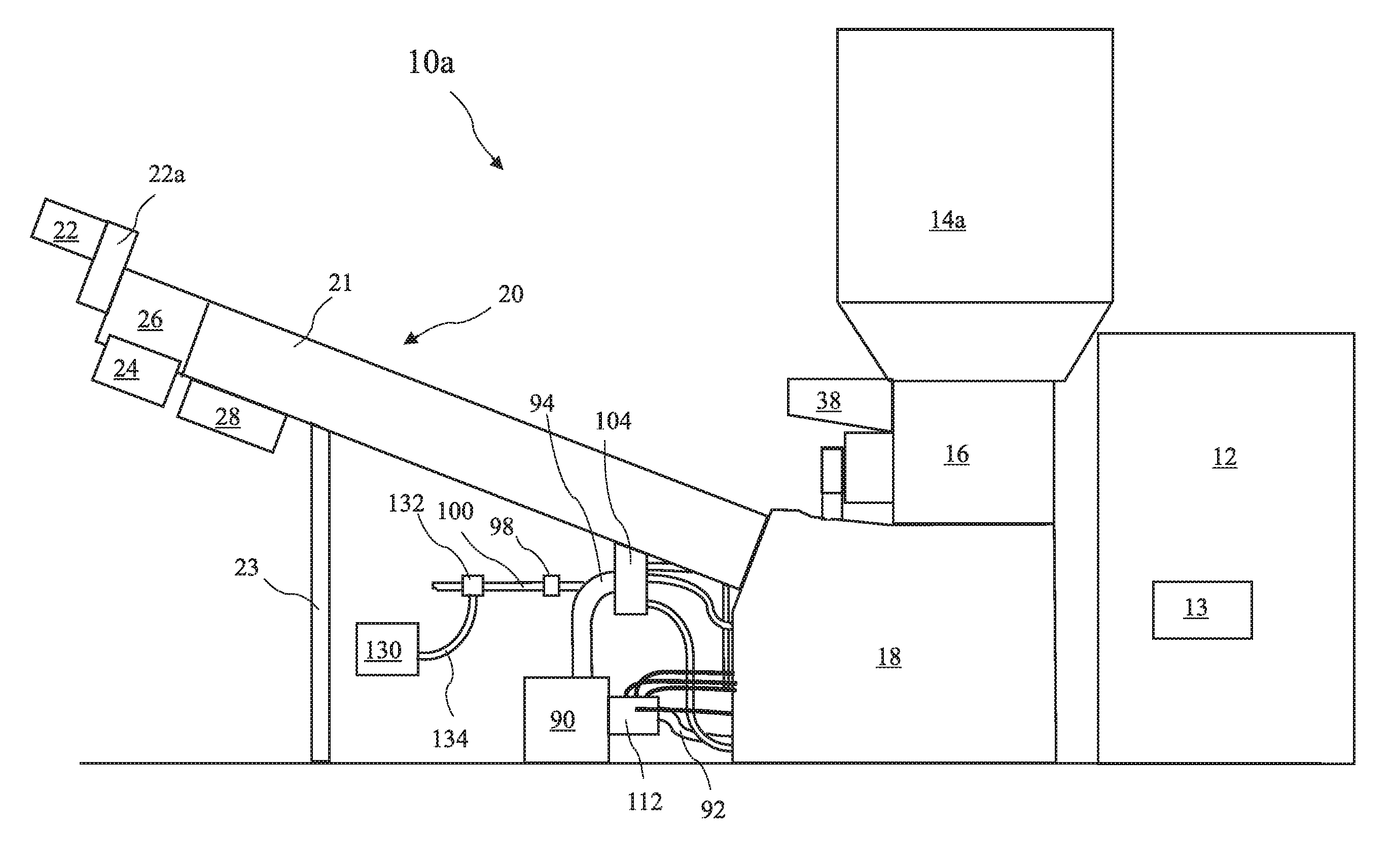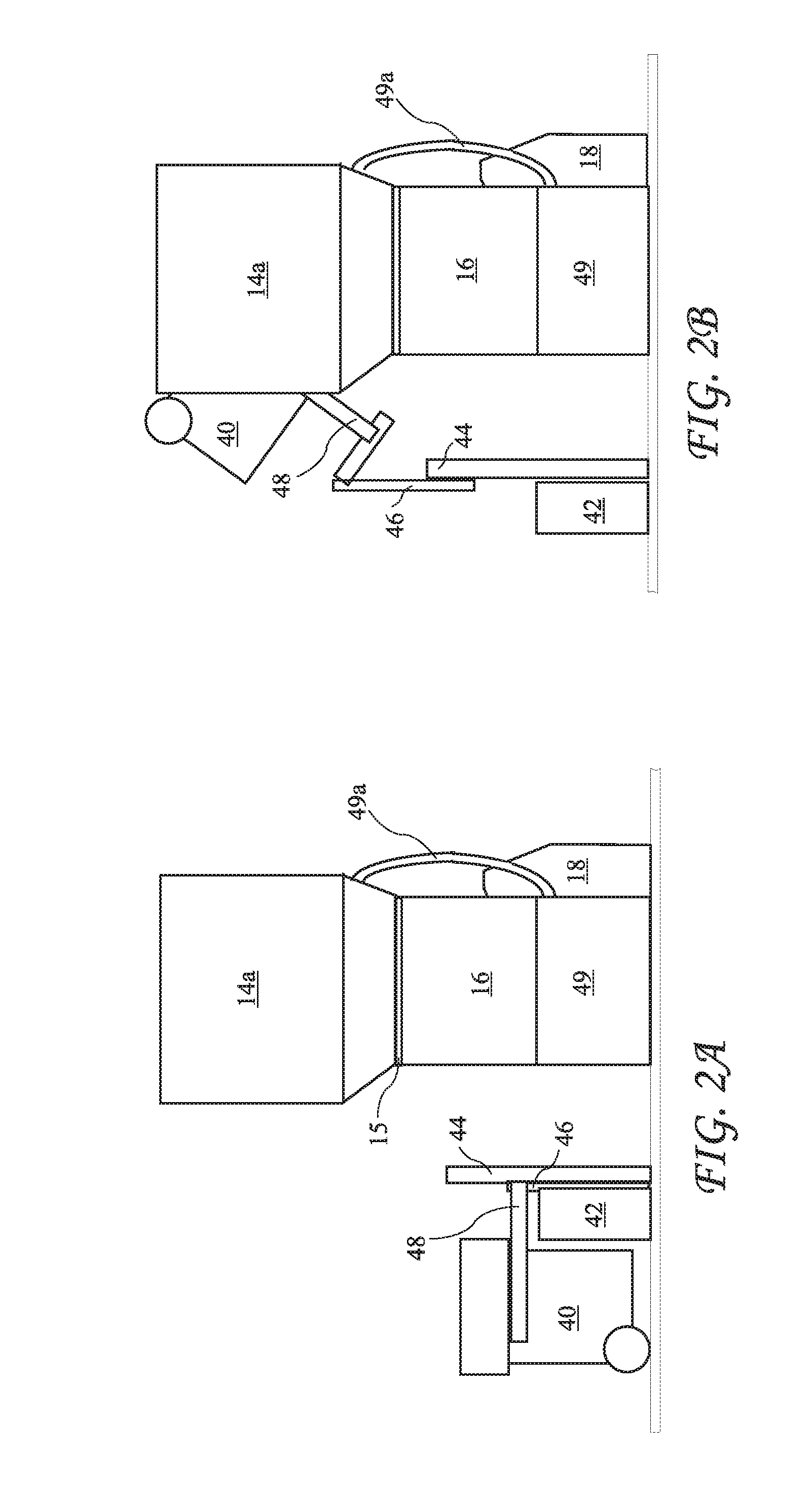Hospital waste treatment
a technology for treating waste and hospitals, applied in the direction of medical waste disposal, solid separation, grain milling, etc., can solve the problems of hospital waste, difficult to distinguish harmless waste from infectious waste, and all hospital waste must be treated
- Summary
- Abstract
- Description
- Claims
- Application Information
AI Technical Summary
Benefits of technology
Problems solved by technology
Method used
Image
Examples
first embodiment
[0050] a waste treatment system 10a according to the present invention is shown in FIG. 1. The waste treatment system 10a includes a cage 12, first feed hopper 14a, a shredder 16, a wetting area comprising a main solution tank 18, and a dwell area comprising an auger 20. A hospital waste container 40 (see FIGS. 2A and 2B) is placed into the cage 12 where a lift unit 42 lifts the container 40 and dumps hospital waste carried in the container 40 into the feed hopper 14a (see FIGS. 2A and 2B). The feed hopper 14a resides above the shredder 16 and feeds the waste into the shredder 16. The shredder 16 shreds the waste, and the shredded waste drops into the main solution tank 18 where the shredded waste is wetted in a disinfectant liquid to create a wetted slurry. The auger 20 is in fluid cooperation with the main solution tank 18 and lifts the wetted slurry from the main solution tank 18 and completes the waste treatment.
[0051] A radioactive material detector 13 resides in the cage 12. W...
third embodiment
[0114] An overview of a waste treatment system 10c according to the present invention is shown in FIG. 22. The waste treatment system 10c includes all of the components and features of the waste treatment system 10b, with the exception of the de-watering system 220 described in FIGS. 16 and 16A. The waste treatment system 10c replaces the de-watering system 220 with a vibtrator de-watering system 300 and a de-watering auger 302. The recovered disinfectant liquid is returned to main tank 232 from both the circular vibtrator de-watering system 300 and the de-watering auger 302 through line 226. De-watered waste material is collected in container 304. An example of a suitable vibratory de-watering apparatus is a circular vibratory de-watering apparatus made by Sweco in Florance, Ky.
[0115] A more detailed view of the de-watering apparatus is shown in FIG. 23 and a cross-sectional view of the vibratory de-watering apparatus 300 taken along line 24-24 of FIG. 23 is shown in FIG. 24. The v...
PUM
 Login to View More
Login to View More Abstract
Description
Claims
Application Information
 Login to View More
Login to View More - R&D Engineer
- R&D Manager
- IP Professional
- Industry Leading Data Capabilities
- Powerful AI technology
- Patent DNA Extraction
Browse by: Latest US Patents, China's latest patents, Technical Efficacy Thesaurus, Application Domain, Technology Topic, Popular Technical Reports.
© 2024 PatSnap. All rights reserved.Legal|Privacy policy|Modern Slavery Act Transparency Statement|Sitemap|About US| Contact US: help@patsnap.com










